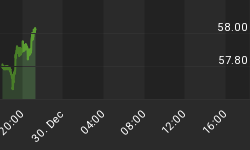India is the fastest-growing energy market in the world as demand for energy on the subcontinent booms. On this, analysts are unanimous. They are also unanimous that the energy reform begun by PM Narendra Modi during his first term in office offers a host of lucrative opportunities for foreign energy and infrastructure companies. Now that Modi has won a second term, these opportunities remain. Yet a brewing tariff spat with the United States might end up closing some doors for U.S. companies.
It all began with the U.S. refusing to exempt India from higher import duties on steel and aluminum. Then President Trump whose administration has been actively seeking ways to open up more of the Indian market to U.S. companies, even at the expense of local businesses, removed India from its list of countries with a preferential trade treatment. Now, India has responded with import tariffs on 28 U.S.-made goods.
Now, these tariffs cover things like apples and almonds and are largely symbolic but if things escalate as we have seen them escalate with China, the energy industry may get drawn into the spat. And while India has more to lose from a trade war at this point, when it comes to energy, U.S. companies will suffer, too, especially those involved in LNG exports. Related: Trader Compares Current Market Environment To 2007
There are energy projects worth US$1 trillion awaiting investments in India. These range from pipelines to power generation capacity to transmission lines in a country where power outages are part of life. There are also plans to boost the share of natural gas in the energy mix from 7 percent now to 14 percent, writes Dipka Bhambhani for Forbes. That’s a lot of opportunities for any energy company. Chances are there will be a lot of competition for these projects and for supplying India with the gas it will need in growing amounts. A trade spat at this point is not the smartest move.
India is already troubled by higher oil prices and the U.S. sanctions on Iran that have closed a door to cheap Iranian crude. India has in this respect acted as a loyal U.S. ally, suspending oil imports from Iran the moment the sanction waivers expired. But now it may be considering restarting the purchases of Iranian crude because of price concerns. It is also trying to negotiate a better oil deal with the U.S.
The country is also increasingly thirsty for LNG. So thirsty, in fact, that the next national budget may dispense with the import duties on the commodity, which currently stands at 2.5 percent. LNG is the greener alternative to coal for power generation, so demand for it is bound to increase strongly and steadily in India in the coming years. And competition in the LNG space is already intense amid a glut and millions of tons in new capacity coming on stream in Australia and the U.S.
Analysts have pointed out that India’s retaliatory tactic may backfire. "If the US chose to respond with retaliatory tariffs on labour-intensive exports such as gems, jewellery and textiles, [or] more pushback on IT services, it would cause far more damage to [India's] economic outlook," the head for India at Oxford Economics, Priyanka Kishore wrote in a note earlier this week.
Yet India can do some harm to U.S. energy companies, too, by picking competitors from elsewhere for its infrastructure projects. And LNG? Everyone from Australia through Qatar to Russia would be happy to step in and replace U.S. LNG for India. A lot of it would be cheaper as well. It seems it would be best if both countries thread a bit more carefully in their trade negotiations so they could continue reaping the benefits of their partnership.
By Irina Slav for Oilprice.com
More Top Reads From Safehaven.com:

















